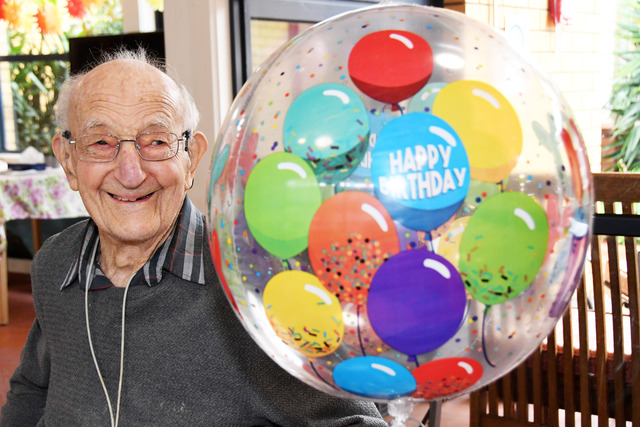The late Jack Johnson was the author of When The Clock Strikes, a fascinating account of growing up in Dandenong, his years tending to the city’s pipes and drains as a plumber and bringing up a family with wife Frances in their beloved home in Macpherson Street.
At St Mary’s of Dandenong there were seven bluestone steps with a masonry balustrade on either side.
The steps themselves were well-worn by thousands of footsteps over the many, many years.
At the top of these seven steps were the heavy wooden doors of the portico, inside which, set into the walls on either side, were large round marble holy water fonts, and near each one, set into the walls, were the poor boxes.
When we first went to church we thought they were Father Little’s money boxes.
The doors on the presbytery side were similar, but because of the slope of the Foster Street hill had only three bluestone steps and no balustrades.
The main entrance doors of the church faced Langhorne Street and were beneath an imposing gothic masonry and stained glass window.
The doors, both at the front and side of the church, were of heavy timber and had rounded top corners.
They were set beneath an ornamented masonry arch.
Above the entrance doors, the window was divided by masonry supports into four long narrow panes of stained glass, topped with a beautiful rose window set within the point of the Gothic arch.
On either side of the front doors and window were two smaller Roman arched apses.
The stained glass rose window over the front door was duplicated at the back of the church above the altar.
From within the church, the window was framed within the arch of the sanctuary, which soared above the communion rail and steps.
The motif of this window was the annunciation.
There were similar windows along each side of the church, which were just as spectacular only slightly smaller.
Western sunlight cascaded through the brilliantly coloured stained glass windows at the front of the church into the choir gallery above the entrance doors and down along the carpeted central aisle, and one of the side windows radiated light through the tread and balustrades of the choir gallery staircase.
When serving at the Latin mass, as we knelt on the burgundy and gold carpeted steps of the altar, the early morning sunlight cast brilliant colours from the window above the altar, over the priest, our faces and white surplices, and onto the sanctuary and white-clothed communion rail.
Even to us kids it was an awe-inspiring sight and feeling to be bathed in that light.
That beautiful old church and the many other buildings of our childhood as we discovered our place had such an overwhelming presence of place and atmosphere, that I have remembered them long after their disappearance.
The church property was almost completely enclosed by a medium height picket fence which started at the front of the presbytery.
The presbytery sat alongside Laurel Lodge facing Langhorne Street.
The picket fence ran down Langhorne Street to the Foster Street corner, up Foster to the McCrae Street corner and ended a short distance along McCrae Street, at the high wire-netting fence of the tennis courts which were built in 1923.
Inside this picket fence was a precisely trimmed cypress hedge which continued along the side and across the end of the tennis courts.
Over the years this hedge grew to a great height, eventually engulfing completely the arched gateway in Langhorne Street.
It was from this cypress hedge that clippings were taken and distributed as palm pieces for the ceremonies on Palm Sunday and some of these were saved and burnt to provide the ashes for the next Ash Wednesday Easter ceremonies.
Remembering the old St Mary’s building

Digital Editions
-

The marvellous Monty Maizels: a life of film and radio over 102 years
Purchase this photo from Pic Store: 486047 From delivering an iconic line in an Australian classic to working with some of Australia’s greatest radio talent,…





